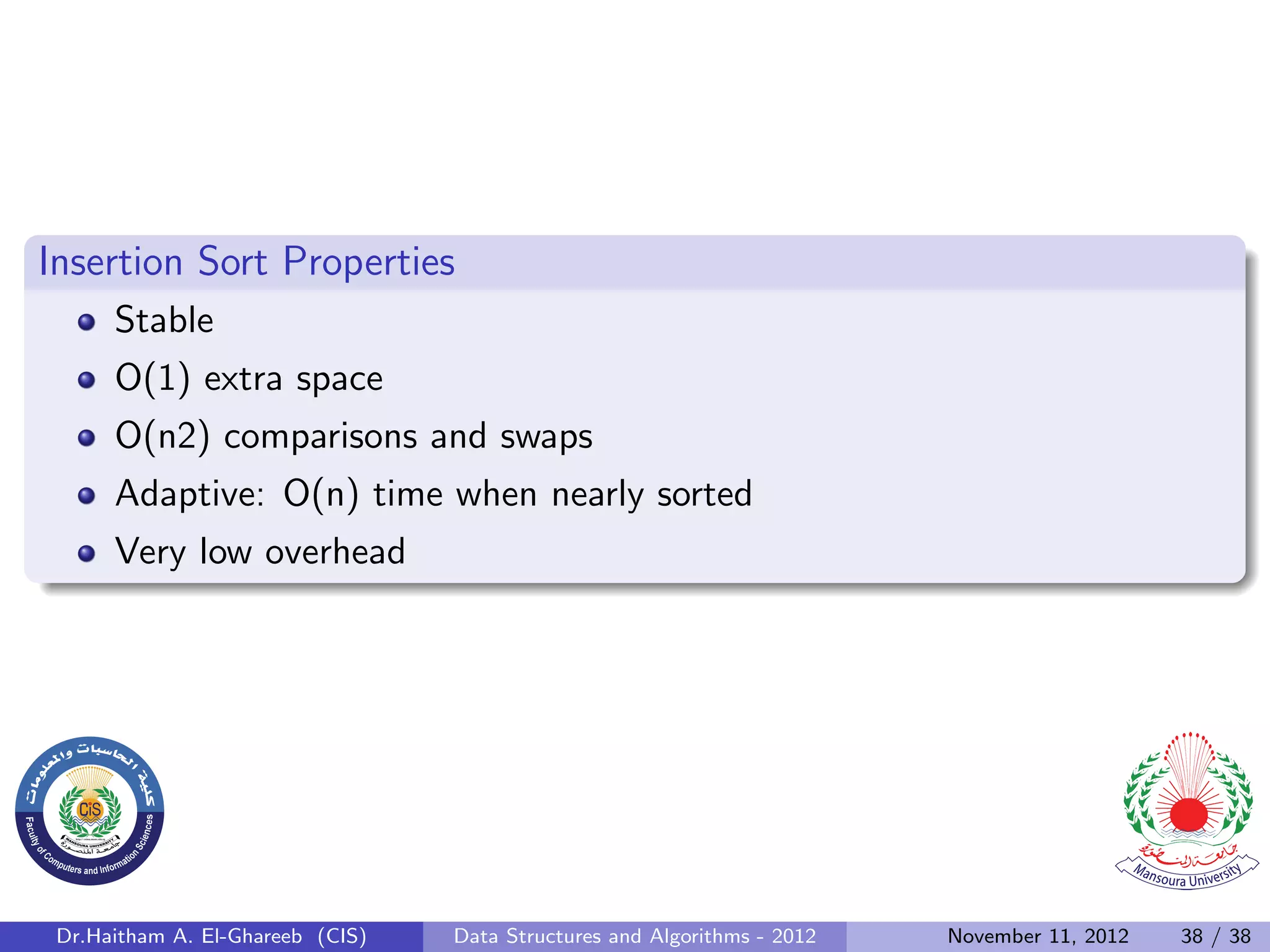The document discusses the bubble sort algorithm. It begins by explaining how bubble sort works by repeatedly stepping through a list and swapping adjacent elements that are out of order until the list is fully sorted. It then provides a step-by-step example showing the application of bubble sort to sort an array from lowest to highest. The document concludes by presenting pseudocode for a bubble sort implementation.

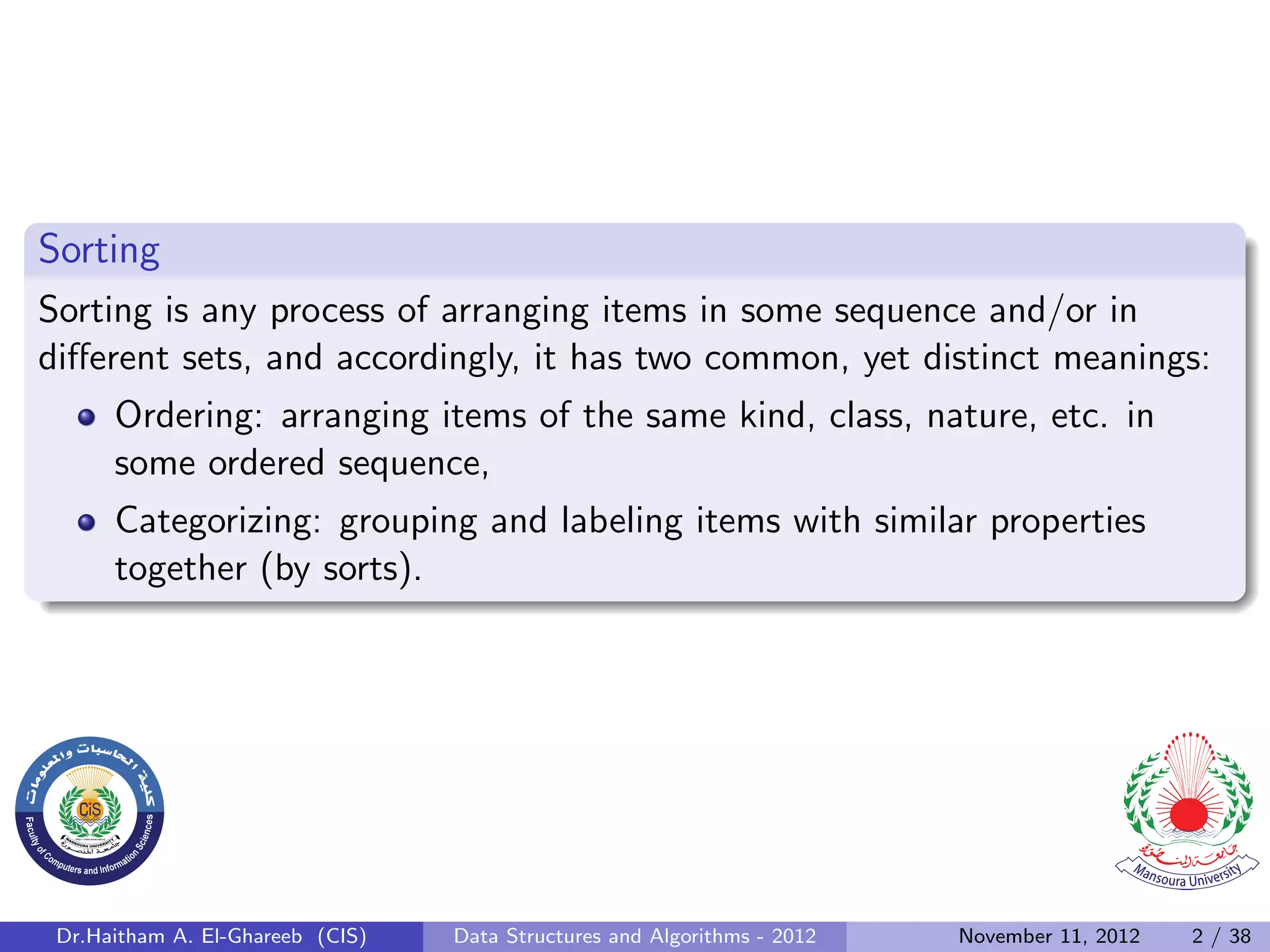
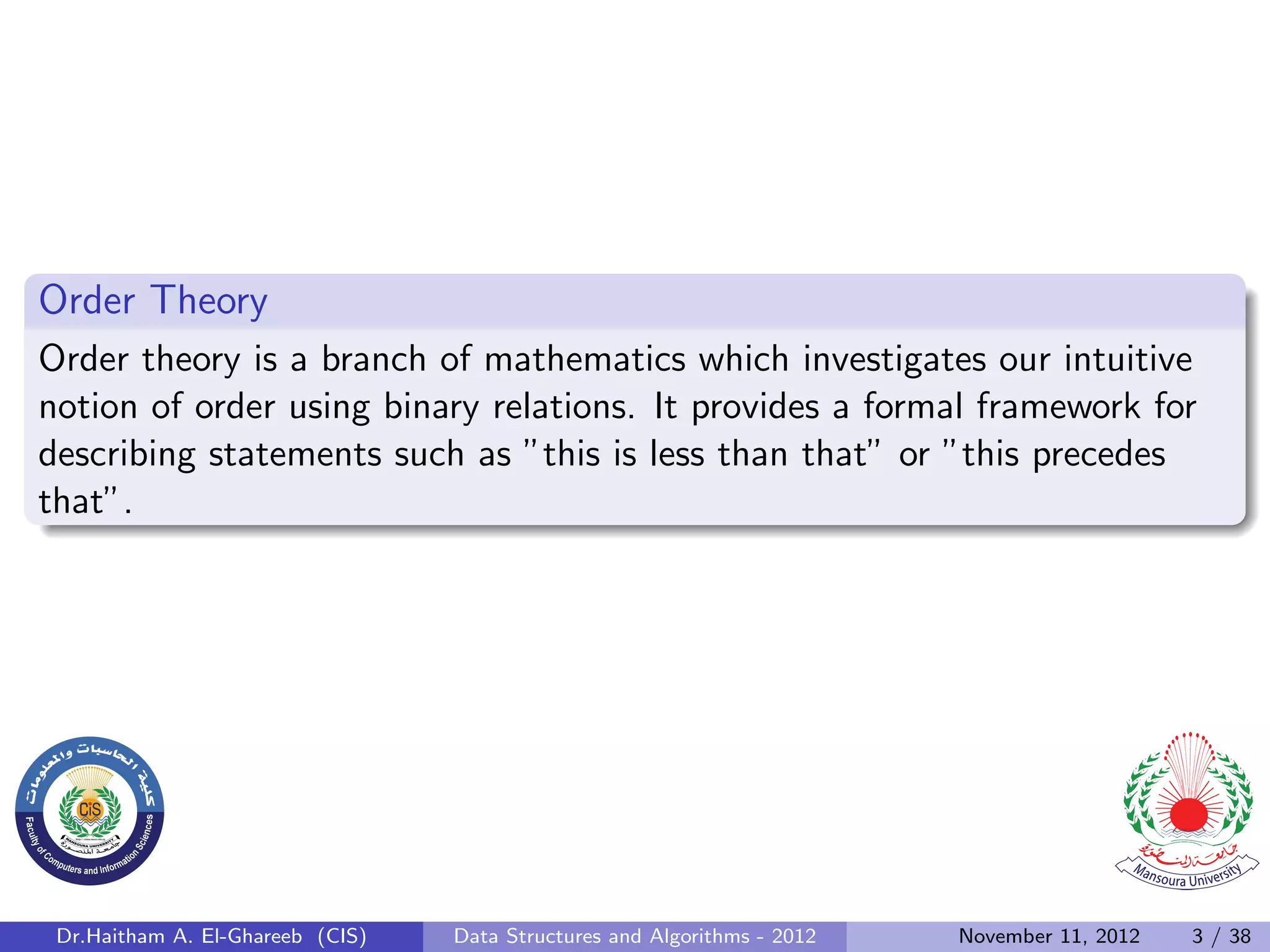


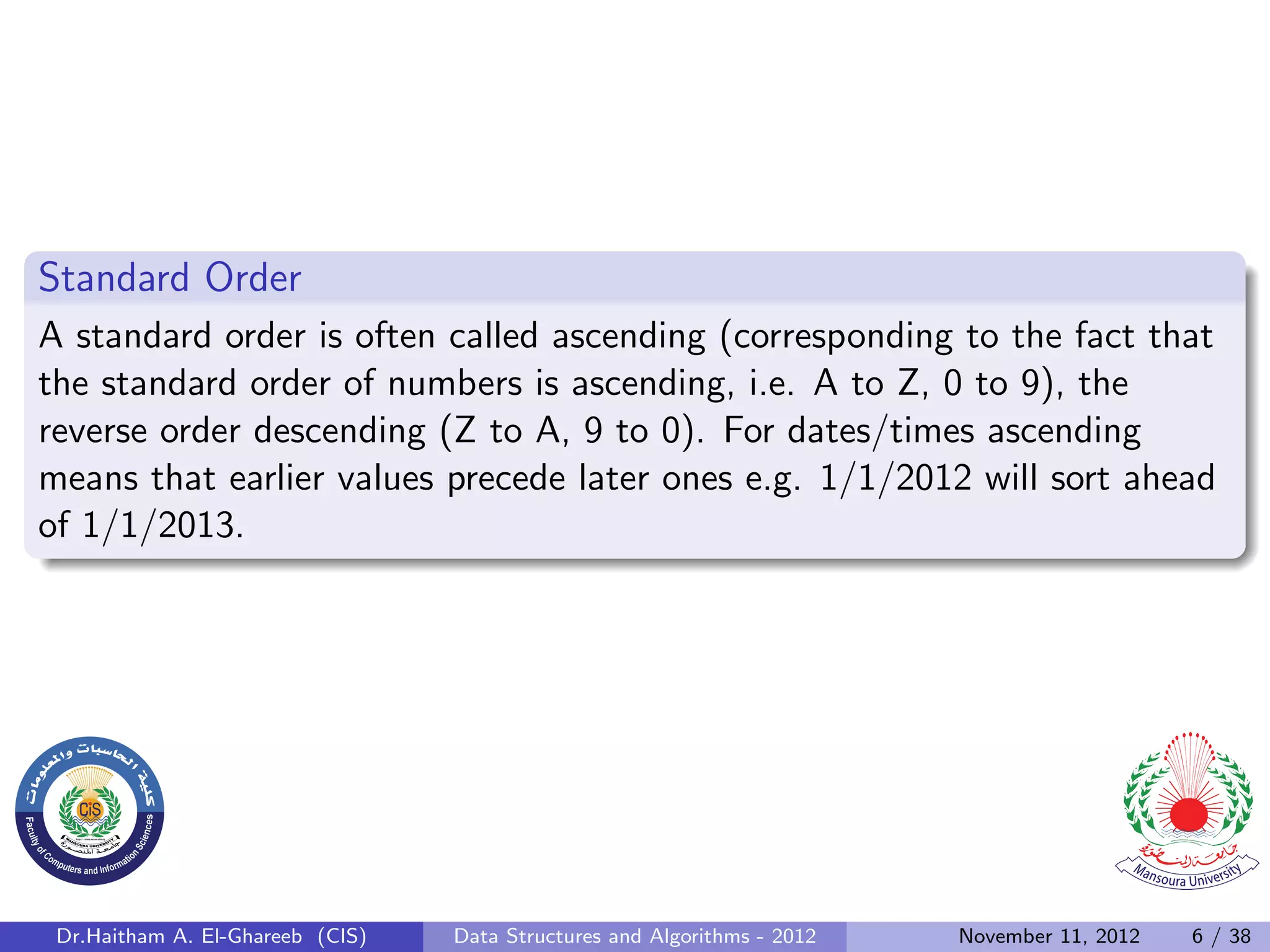
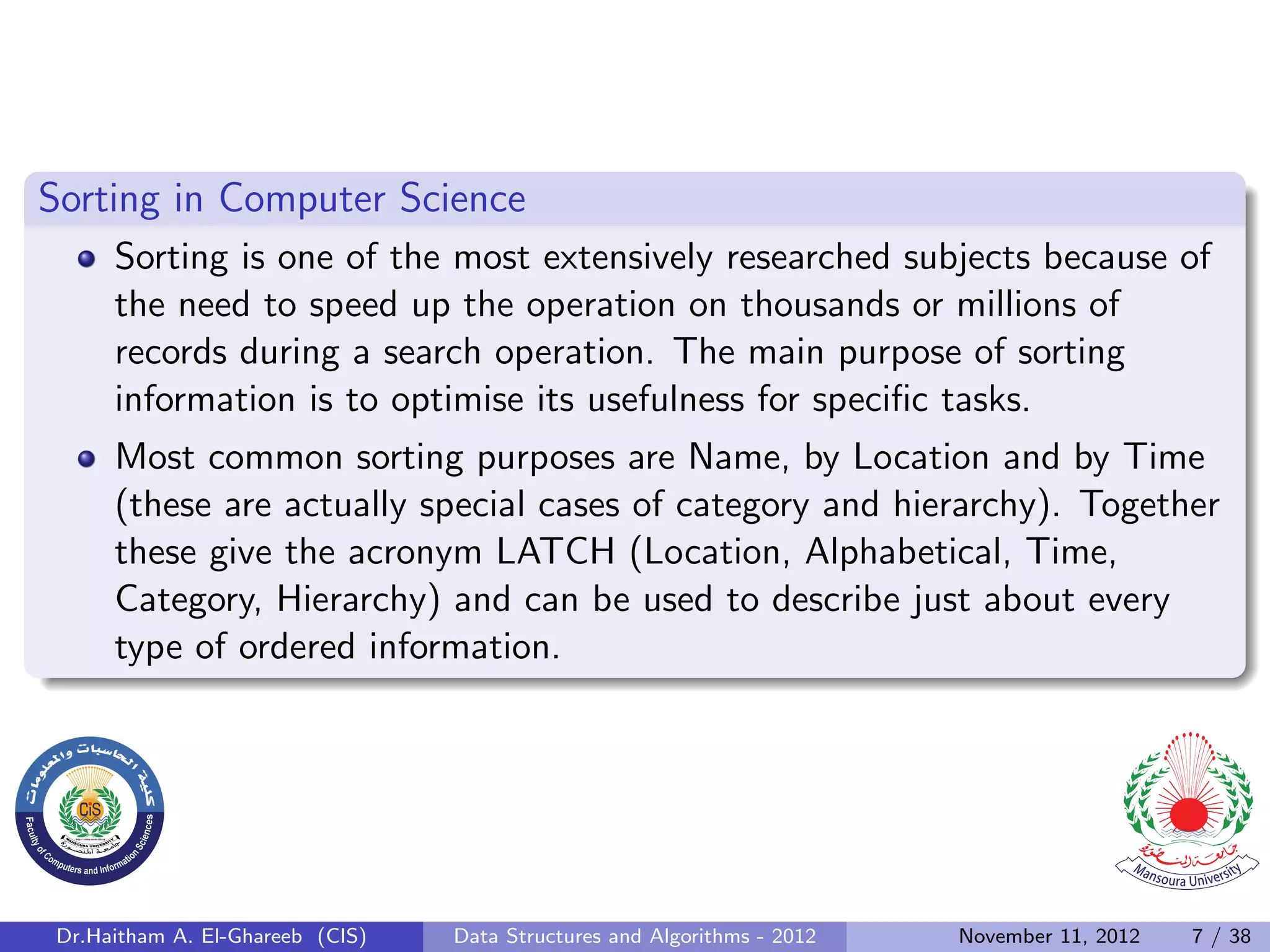
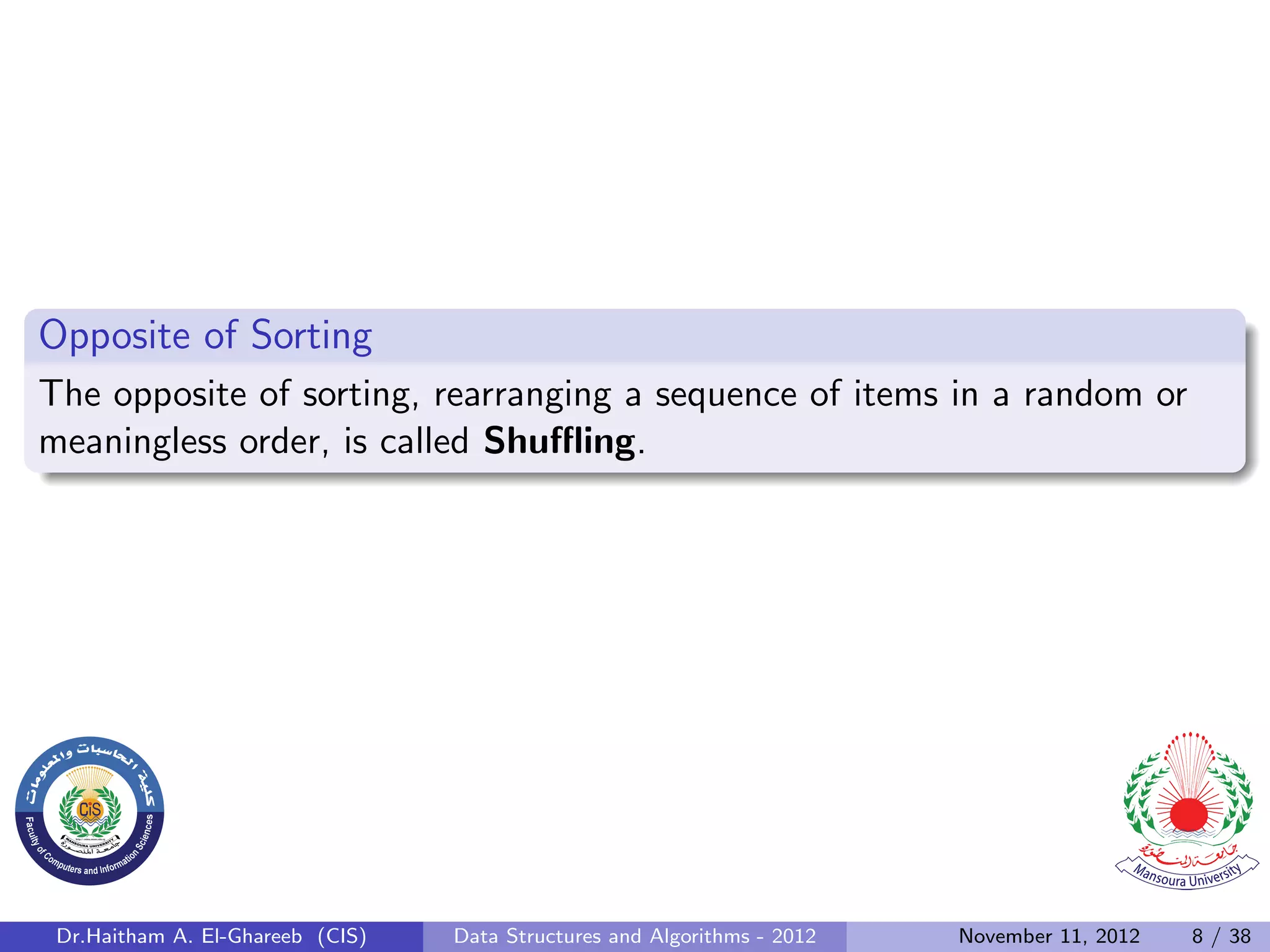
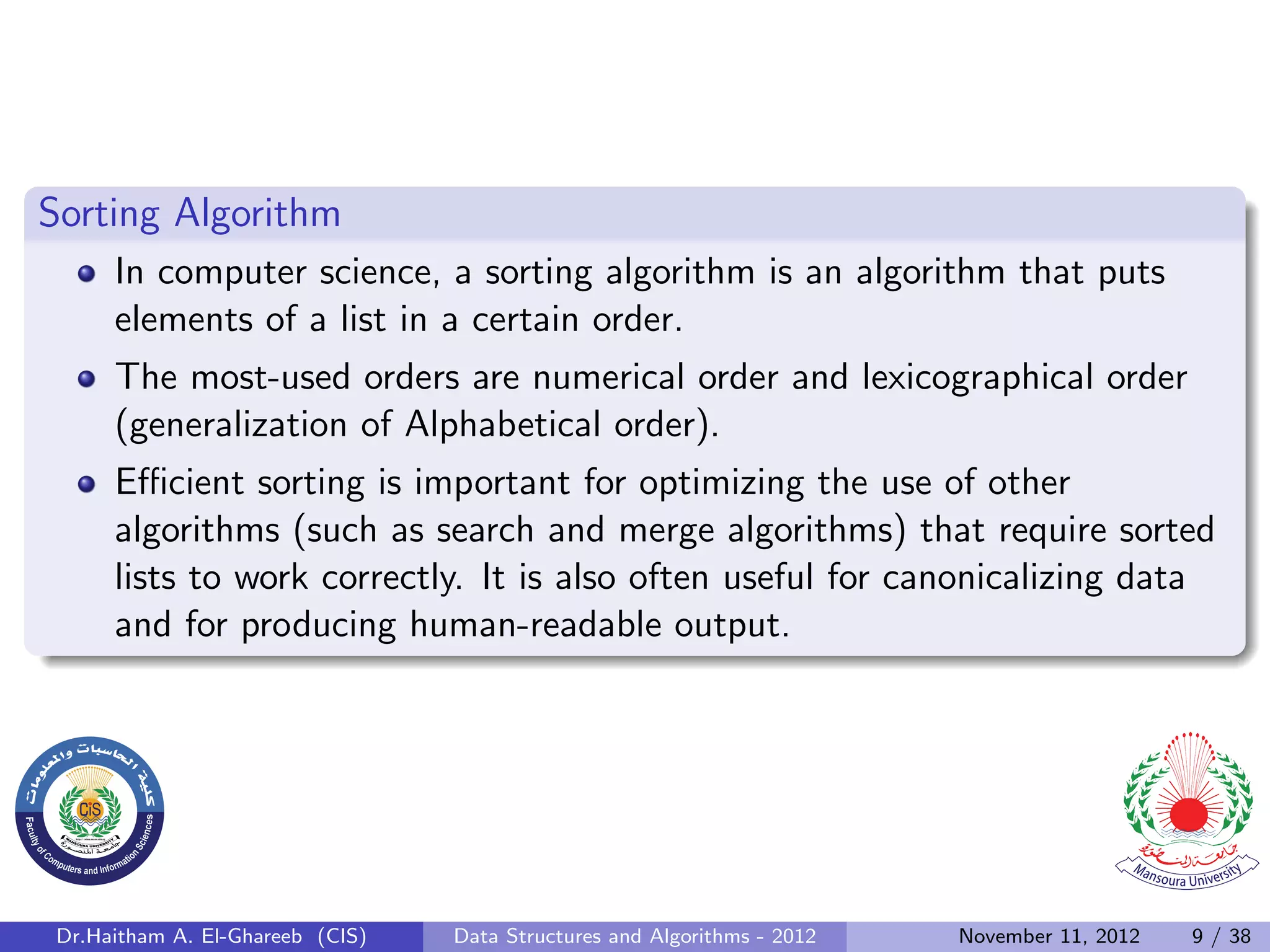
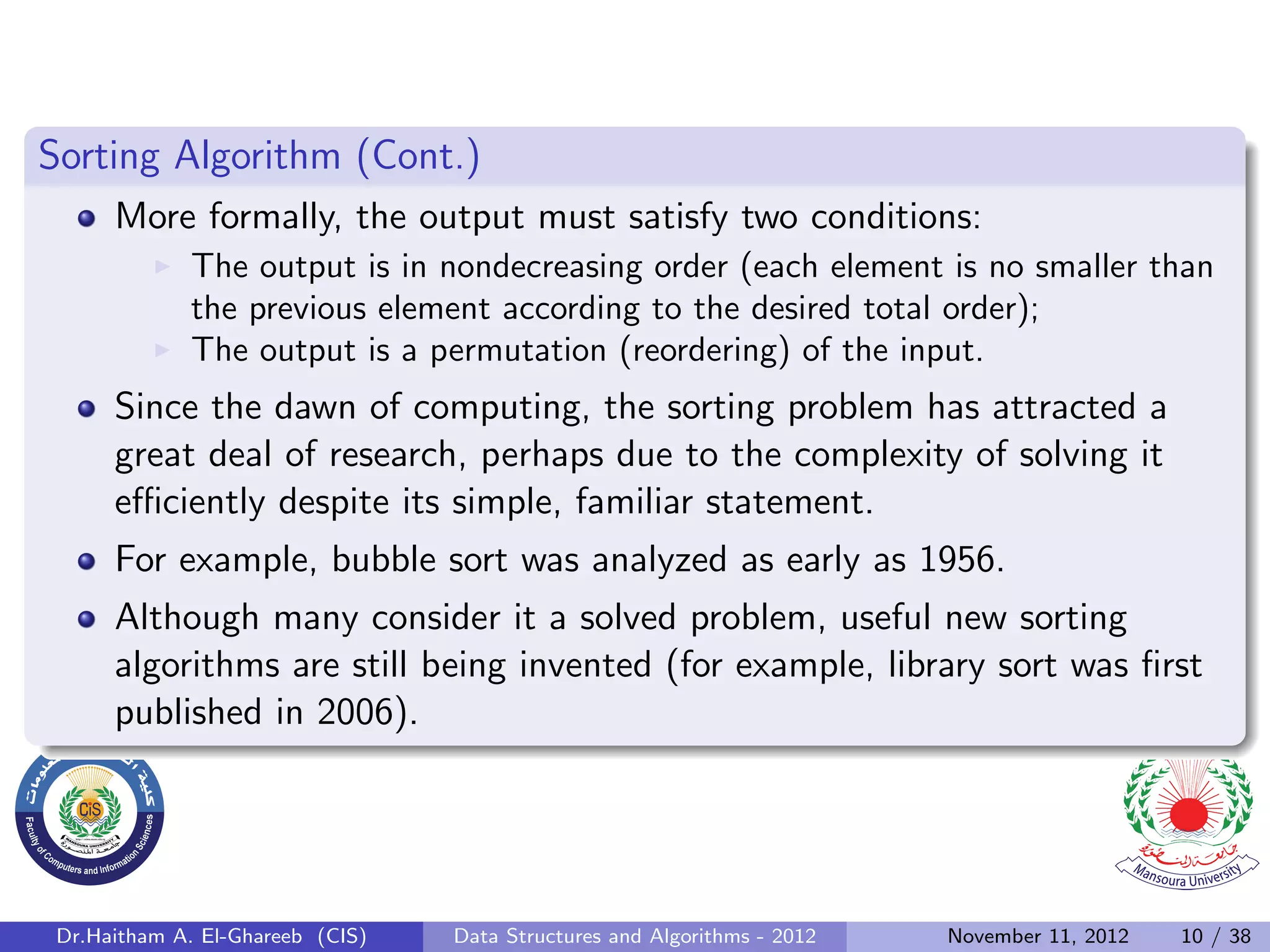
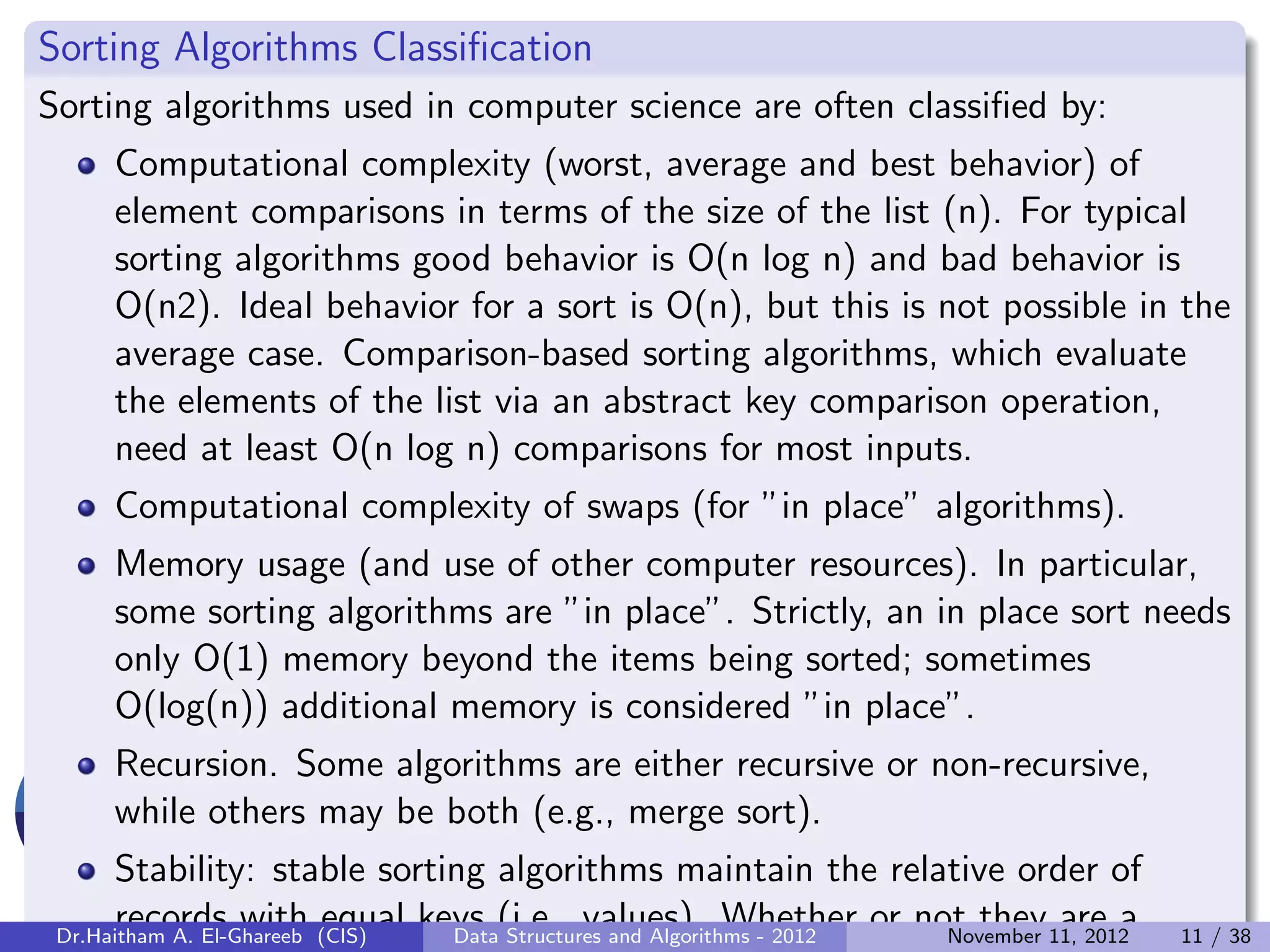
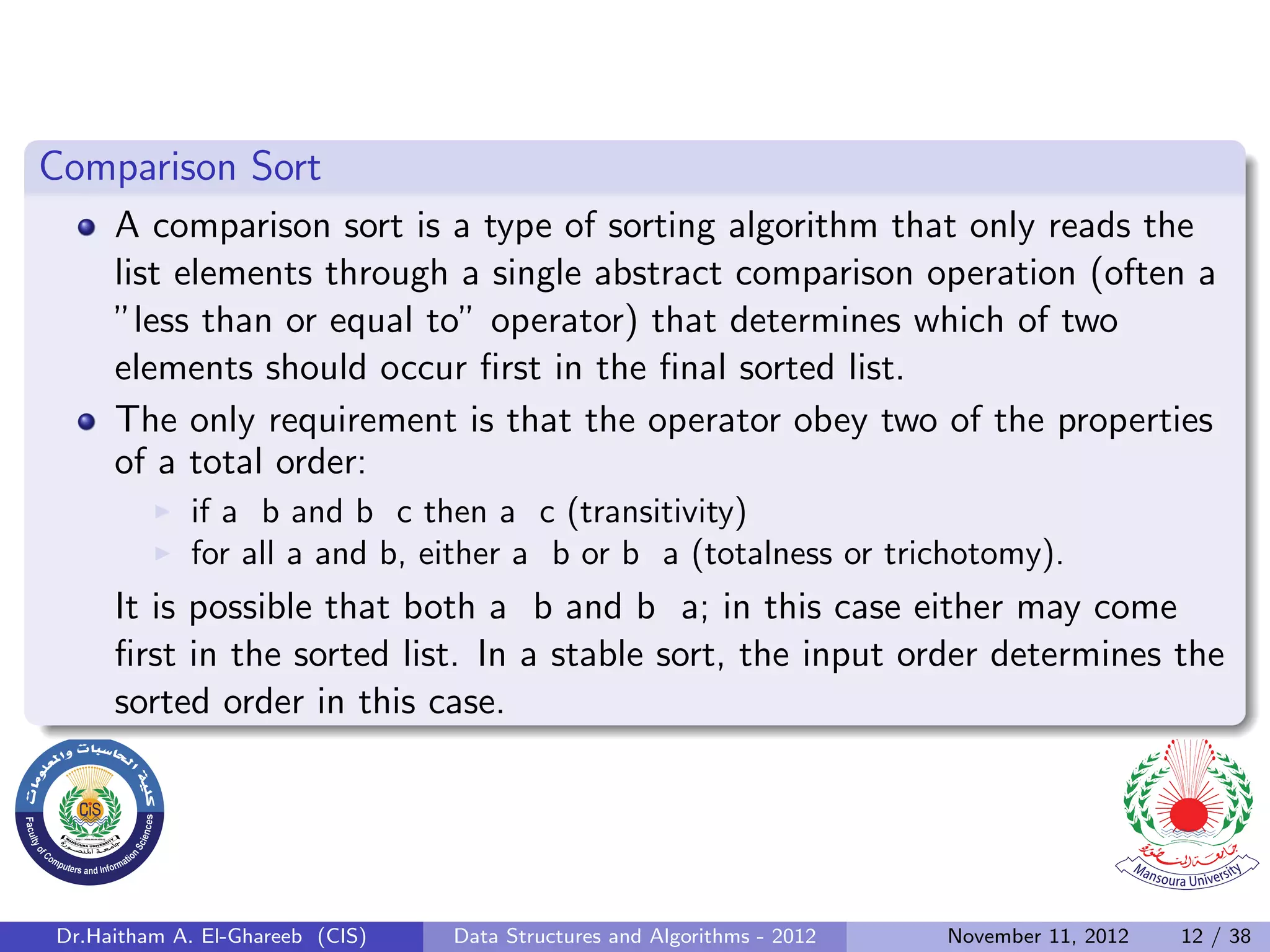
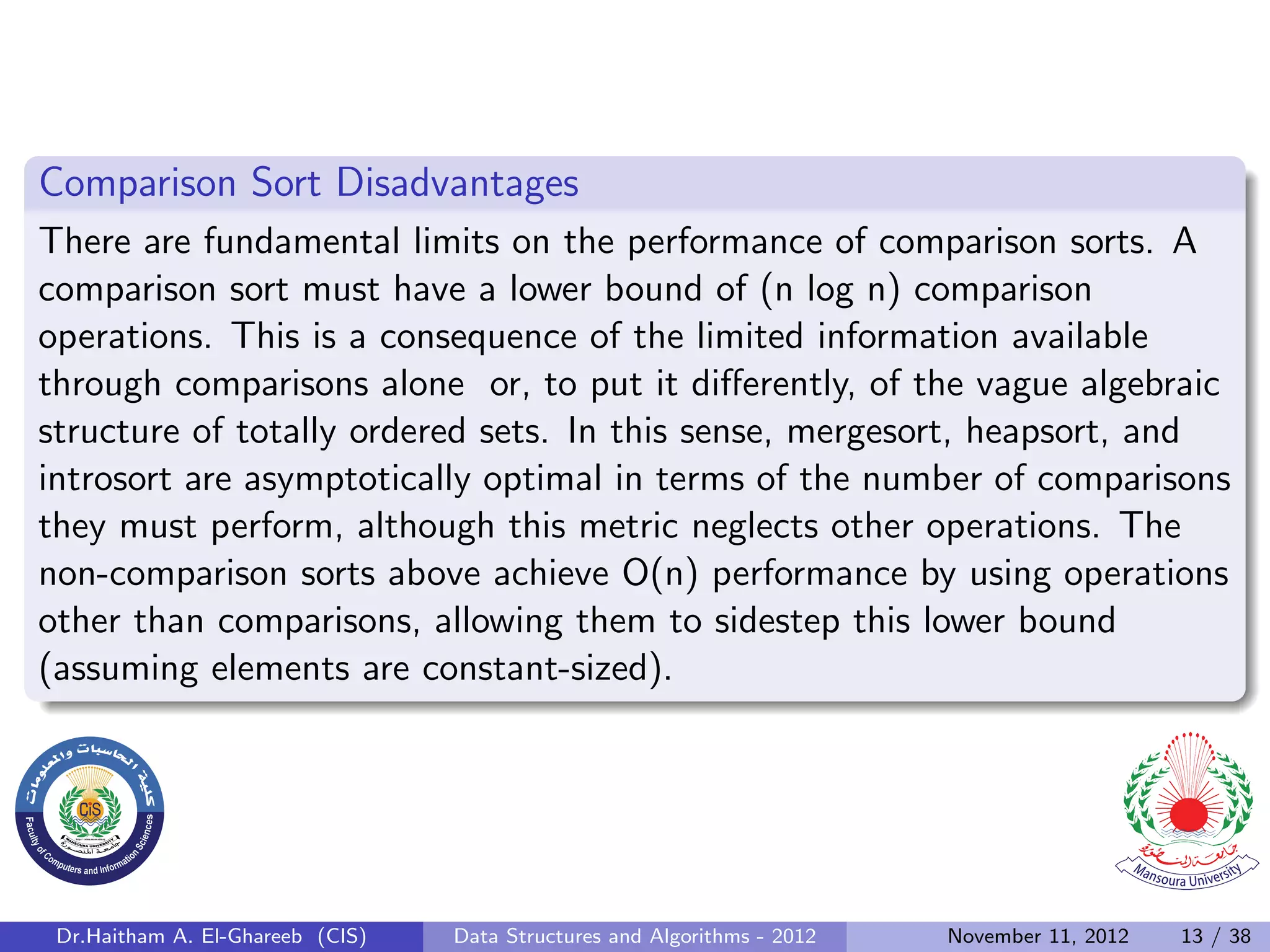
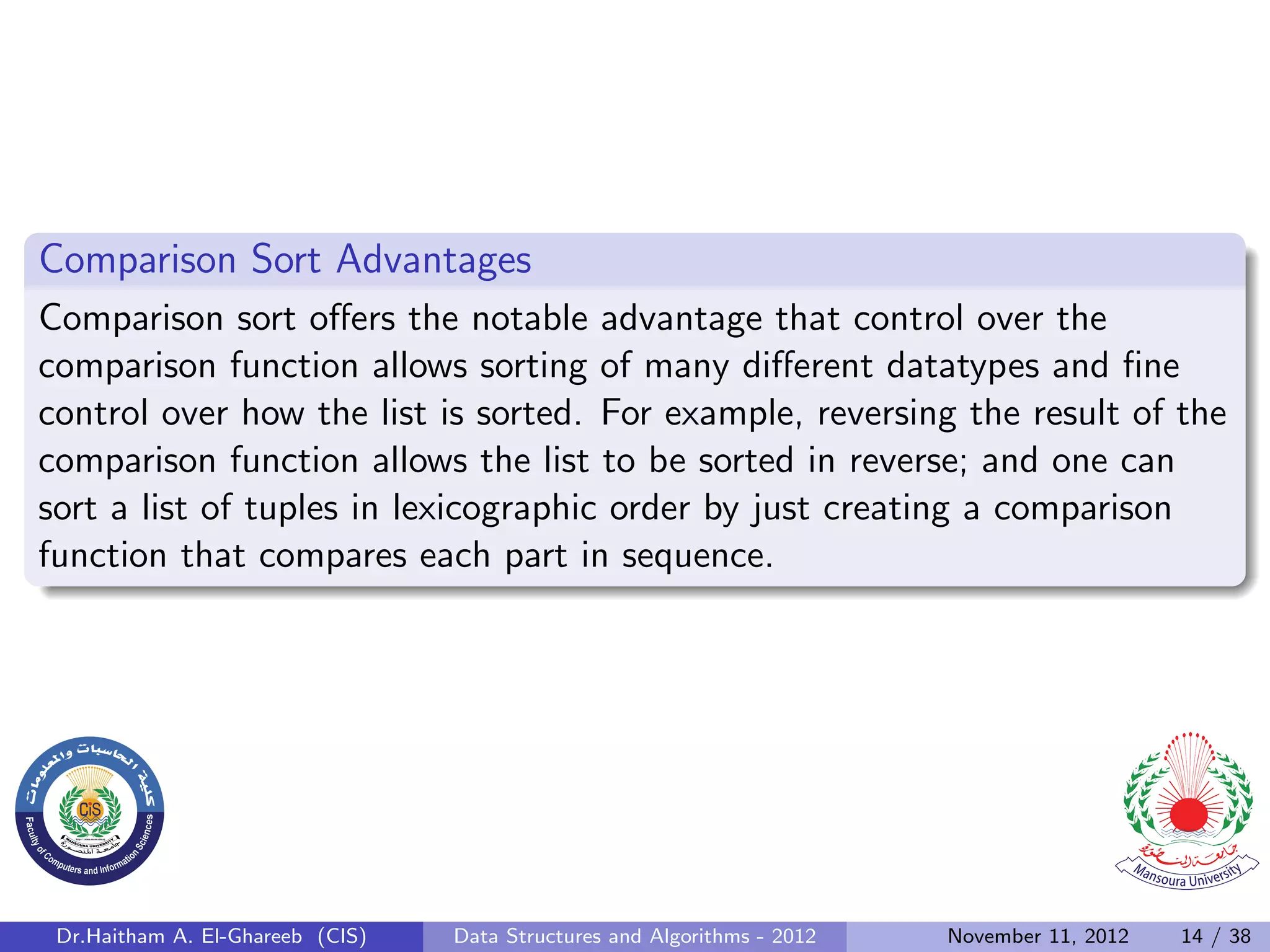


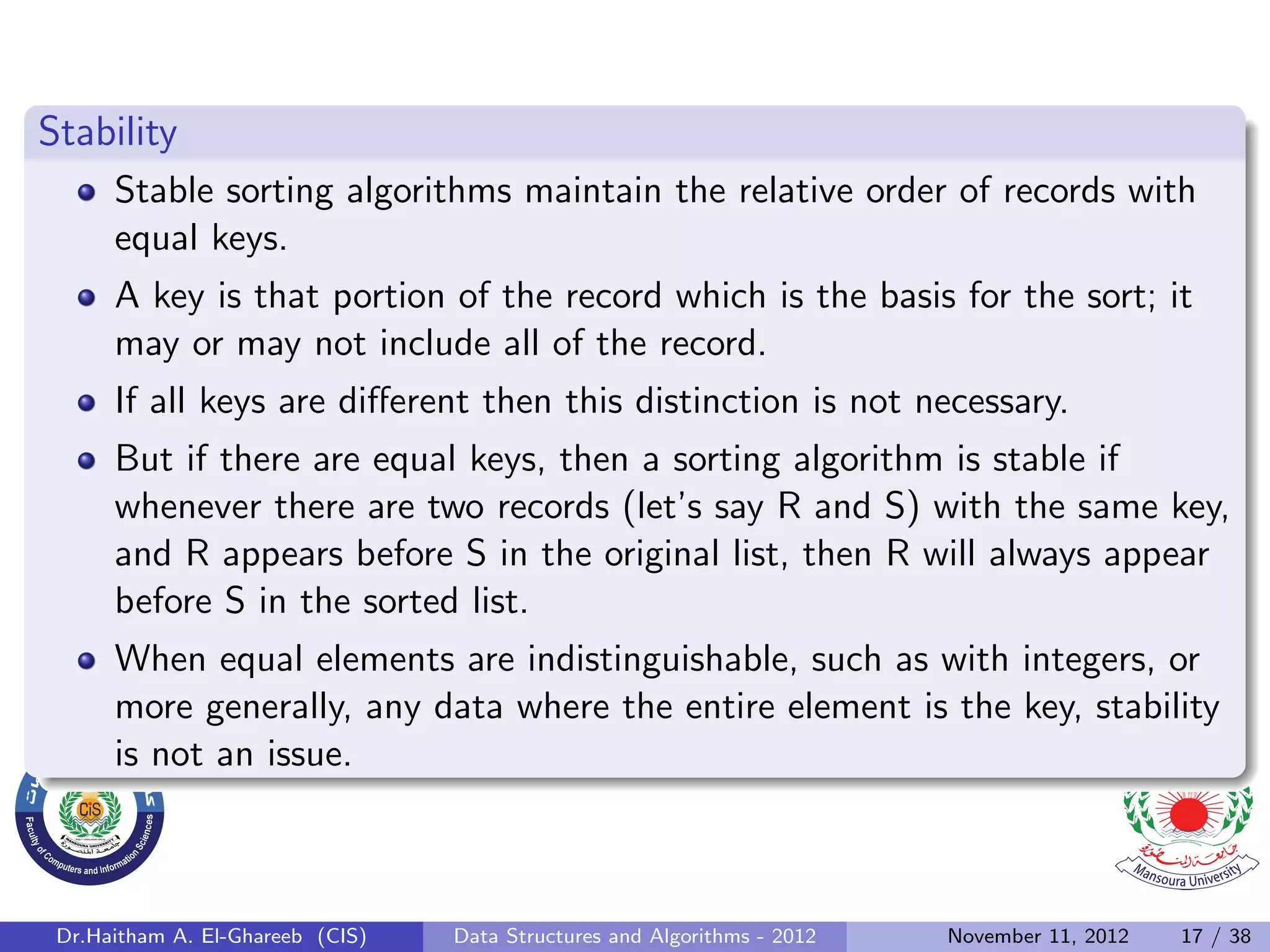
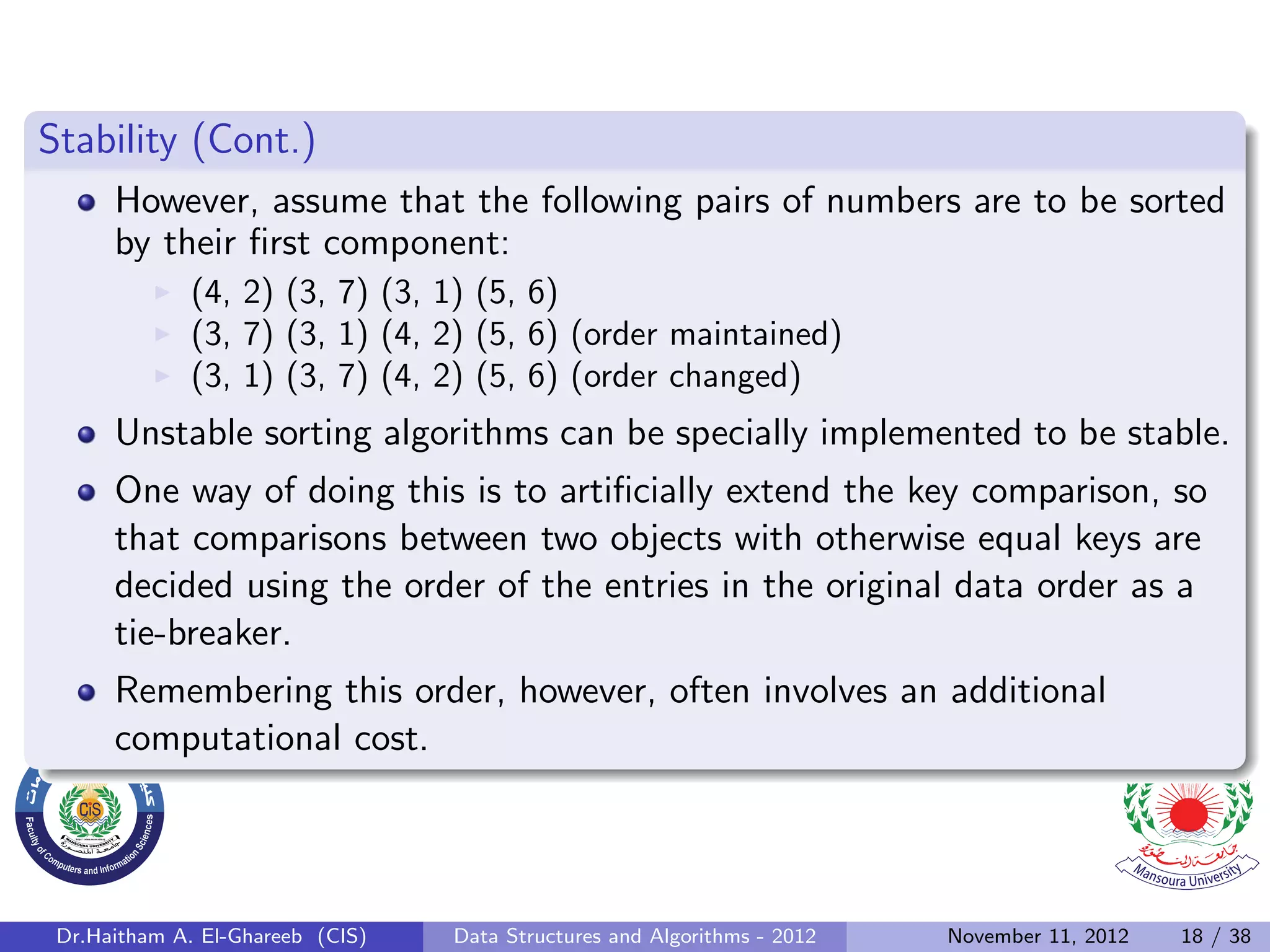

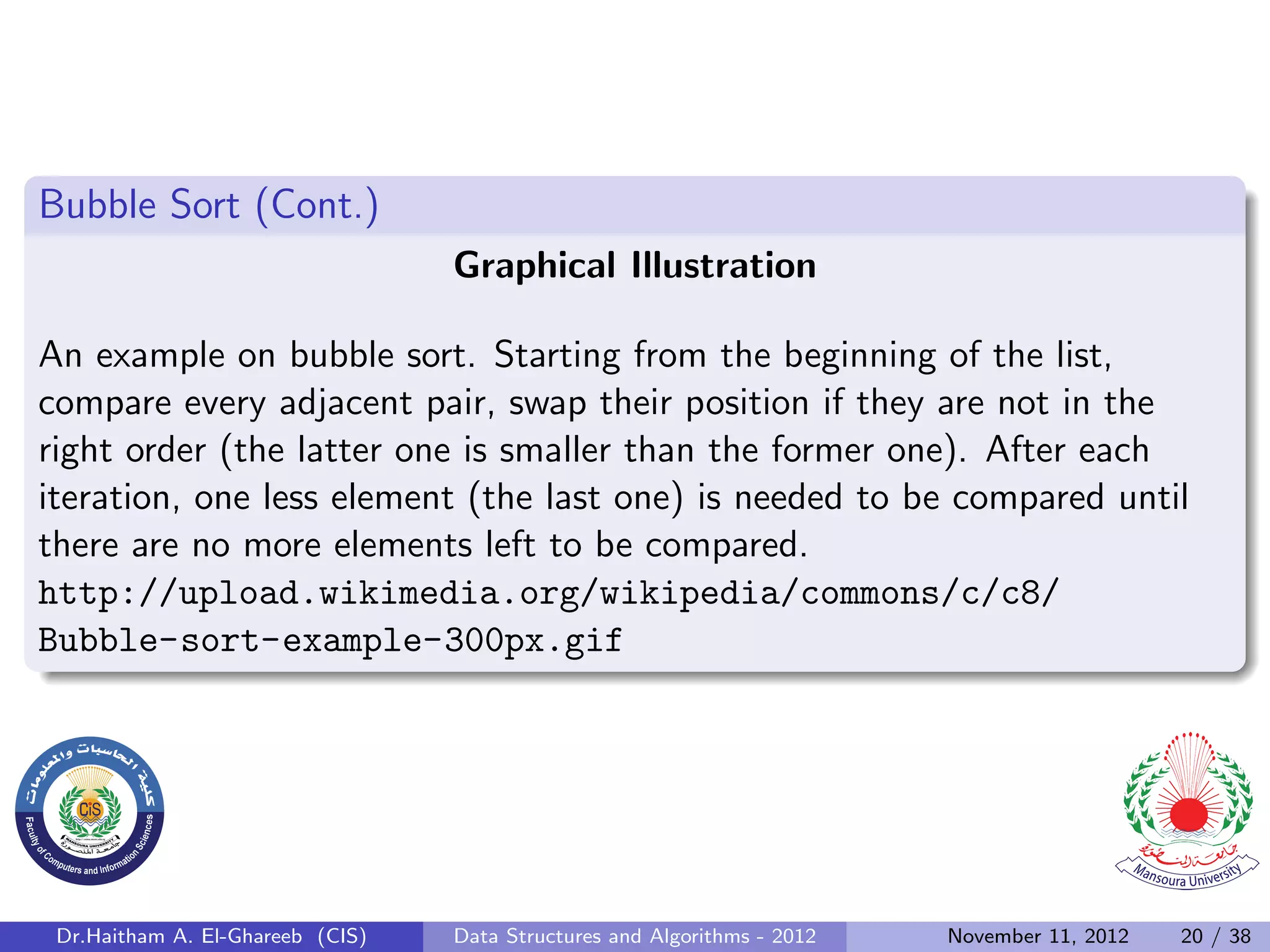
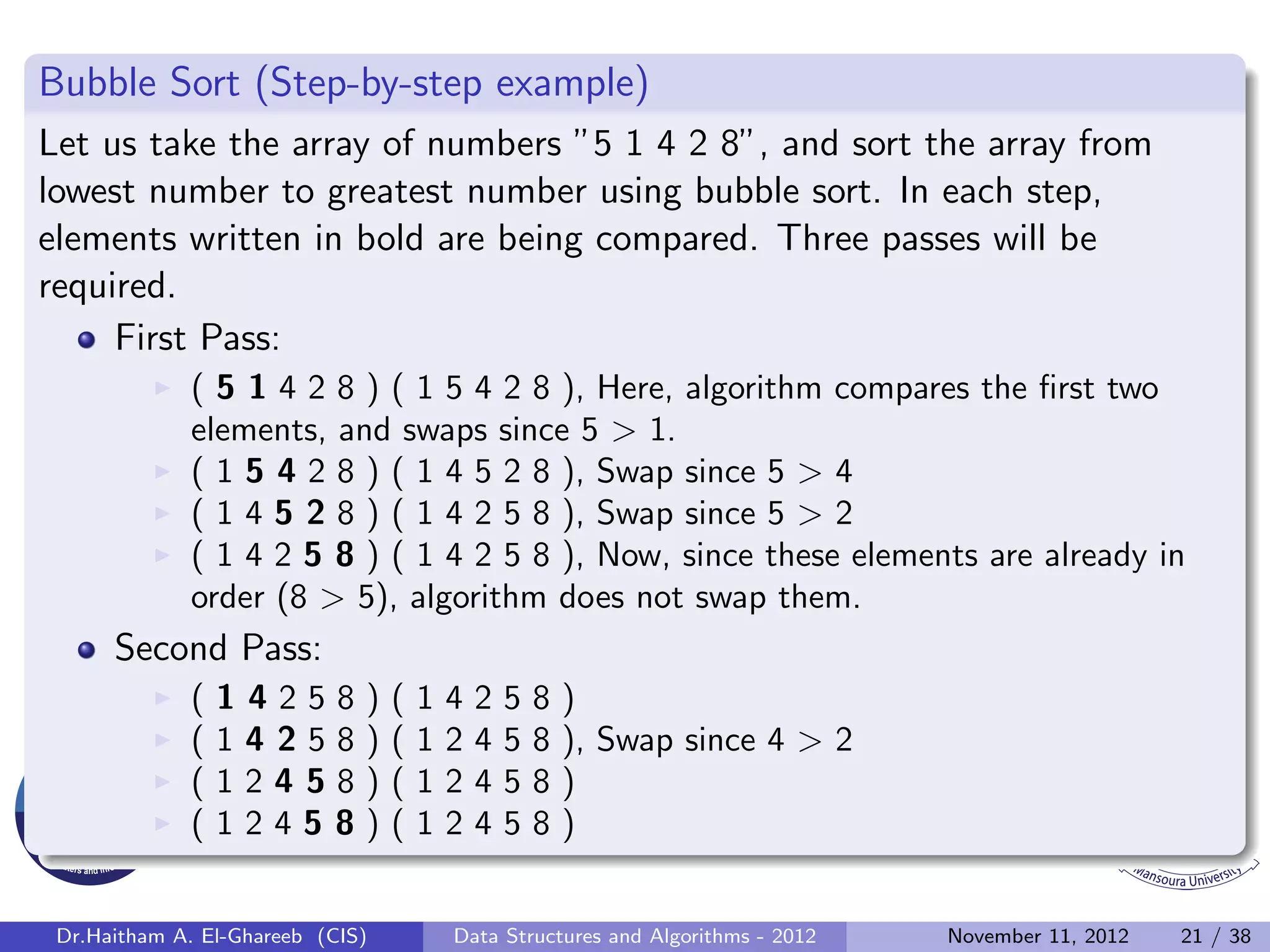
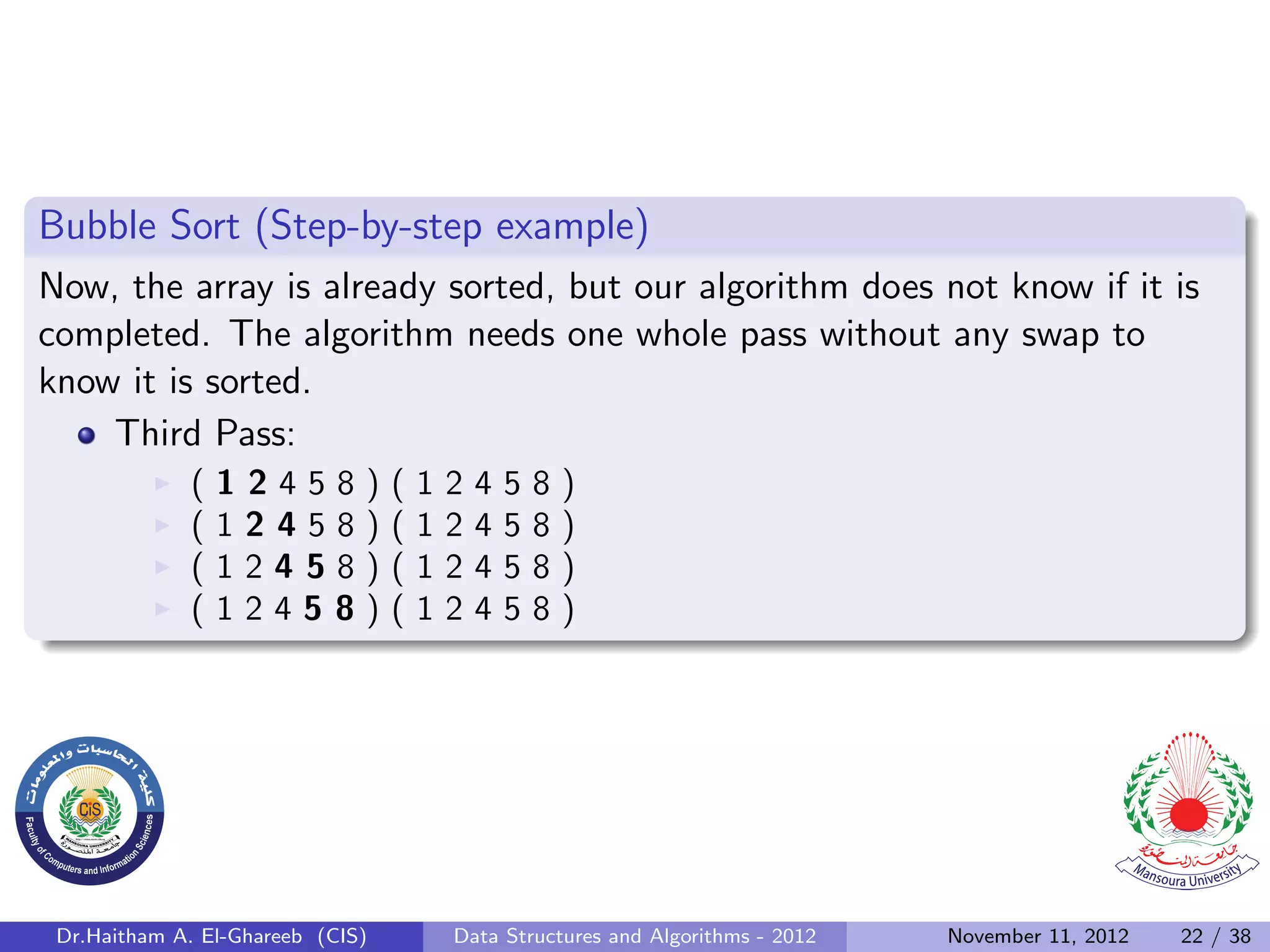
![Pseudocode implementation
procedure bubbleSort ( A : list of sortable items )
repeat
swapped = false
for i = 1 to length ( A ) − 1 inclusive do :
/∗ i f this pair is out of order ∗/
i f A [ i −1] > A [ i ] t h e n
/∗ swap them and remember something changed ∗/
swap ( A [ i −1] , A [ i ] )
swapped = true
end i f
end for
until not swapped
end procedure
Dr.Haitham A. El-Ghareeb (CIS) Data Structures and Algorithms - 2012 November 11, 2012 23 / 38](https://image.slidesharecdn.com/lect06-121110234105-phpapp01/75/Lecture-07-Data-Structures-Basic-Sorting-23-2048.jpg)
![Bubble Sort Implementation in C#
public void BubbleSort ( ) {
int temp ;
for ( int outer = upper ; outer >= 1 ; outer −−) {
for ( int inner = 0 ; inner <= outer −1; inner++)
i f ( ( int ) arr [ inner ] > arr [ inner +1]) {
temp = arr [ inner ] ;
arr [ inner ] = arr [ inner + 1 ] ;
arr [ inner +1] = temp ;
}
}
}
Dr.Haitham A. El-Ghareeb (CIS) Data Structures and Algorithms - 2012 November 11, 2012 24 / 38](https://image.slidesharecdn.com/lect06-121110234105-phpapp01/75/Lecture-07-Data-Structures-Basic-Sorting-24-2048.jpg)
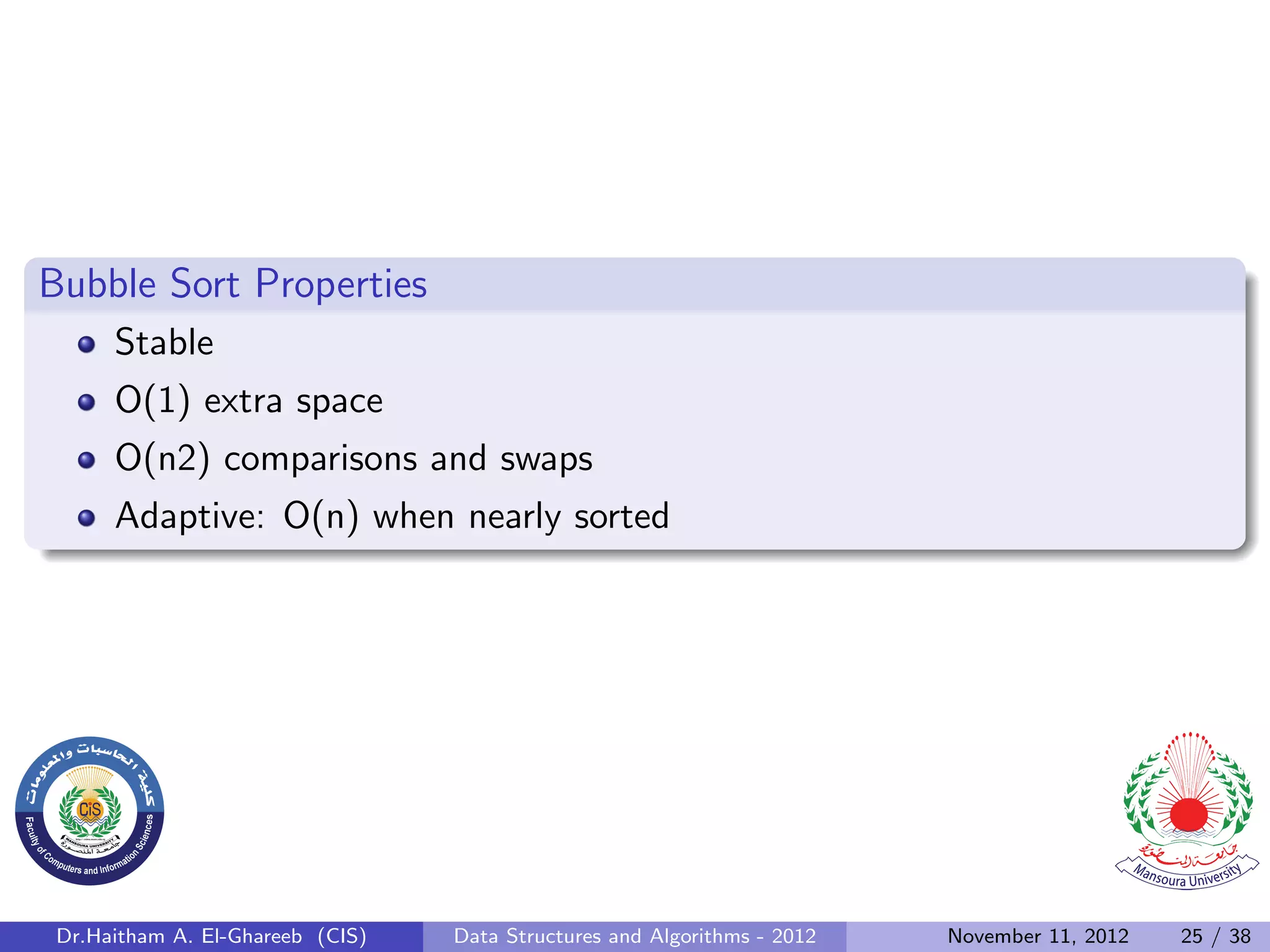
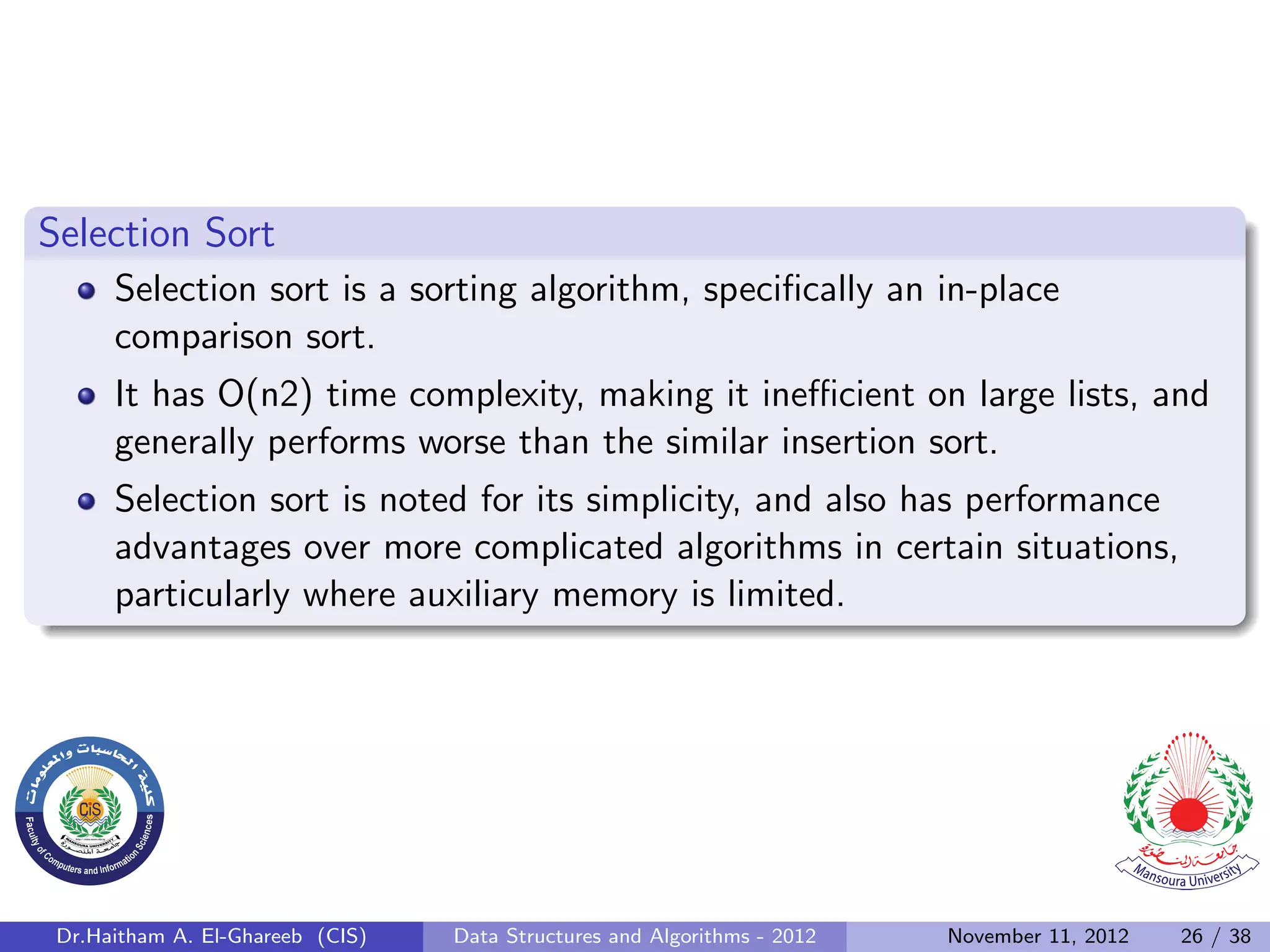
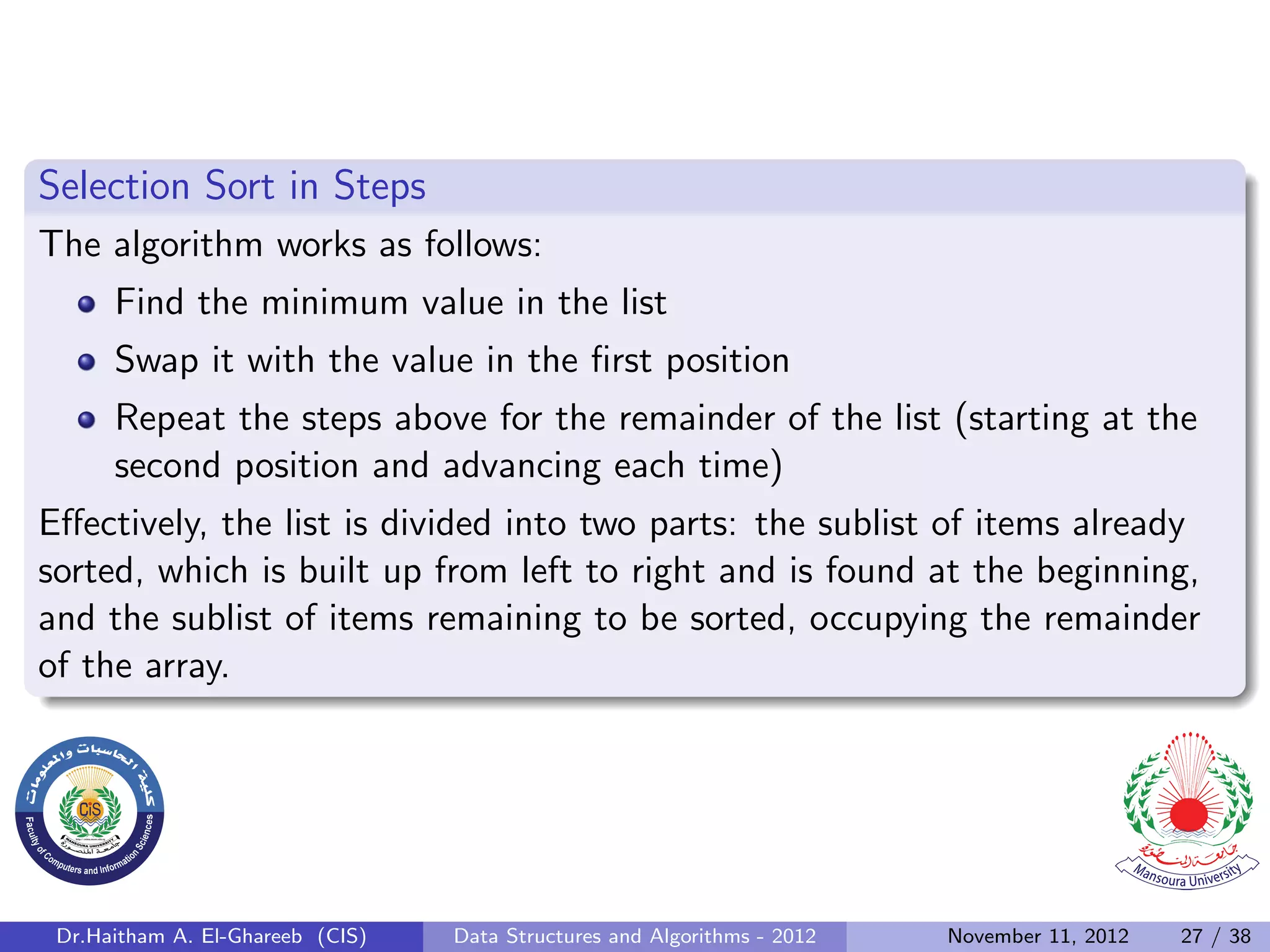
![Selection Sort Algorithm
for i = 1 : n ,
k = i
for j = i +1: n , if a[j] < a[k] , k = j
swap a [ i , k ]
end
Dr.Haitham A. El-Ghareeb (CIS) Data Structures and Algorithms - 2012 November 11, 2012 28 / 38](https://image.slidesharecdn.com/lect06-121110234105-phpapp01/75/Lecture-07-Data-Structures-Basic-Sorting-28-2048.jpg)

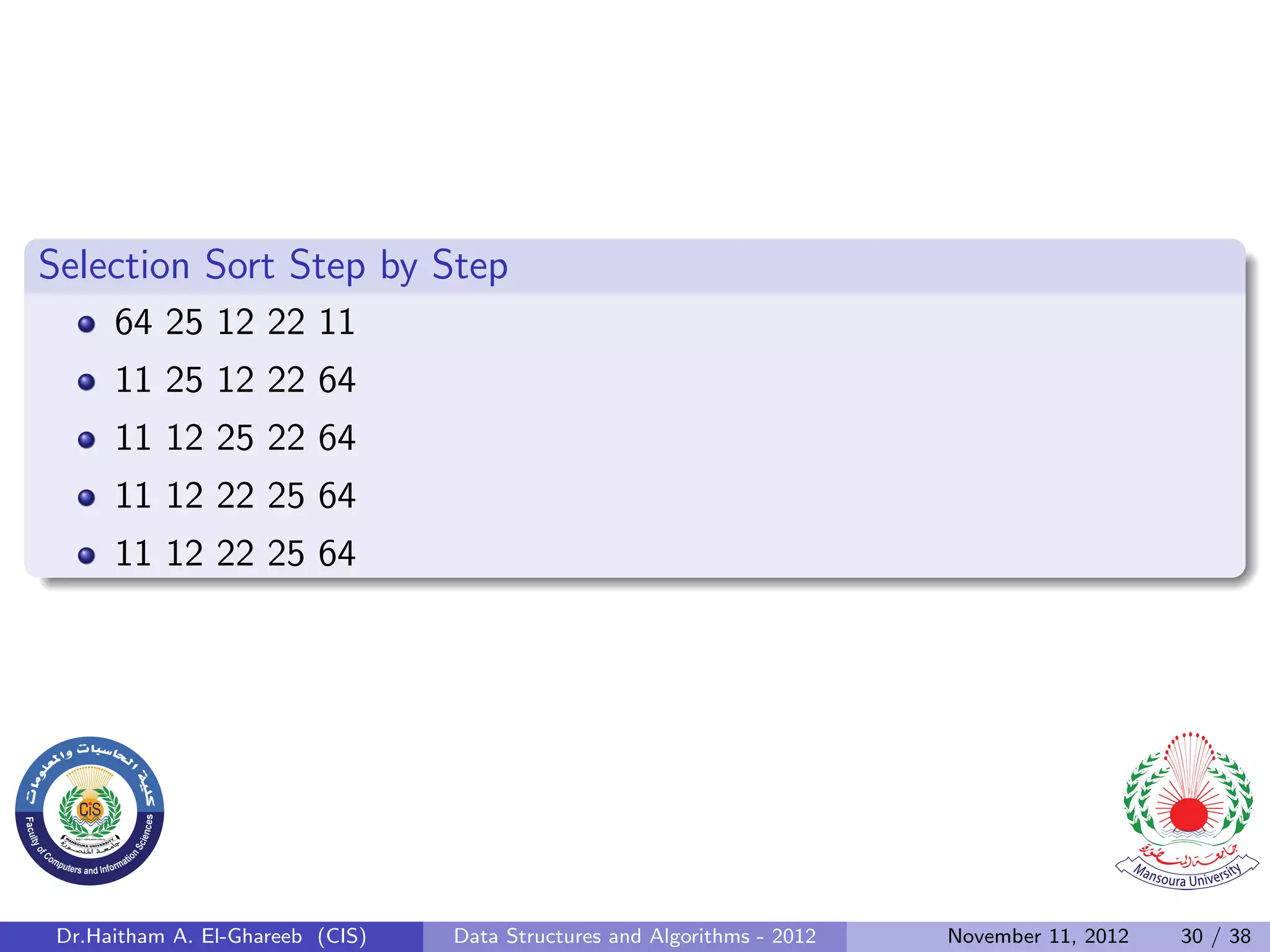
![Selection Sort Implementation
public void SelectionSort ( ) {
int min , temp ;
for ( int outer = 0 ; outer <= upper ; outer++) {
min = outer ;
for ( int inner = outer + 1 ; inner <= upper ; inner++)
i f ( arr [ inner ] < arr [ min ] )
min = inner ;
temp = arr [ outer ] ;
arr [ outer ] = arr [ min ] ;
arr [ min ] = temp ;
} }
Dr.Haitham A. El-Ghareeb (CIS) Data Structures and Algorithms - 2012 November 11, 2012 31 / 38](https://image.slidesharecdn.com/lect06-121110234105-phpapp01/75/Lecture-07-Data-Structures-Basic-Sorting-31-2048.jpg)
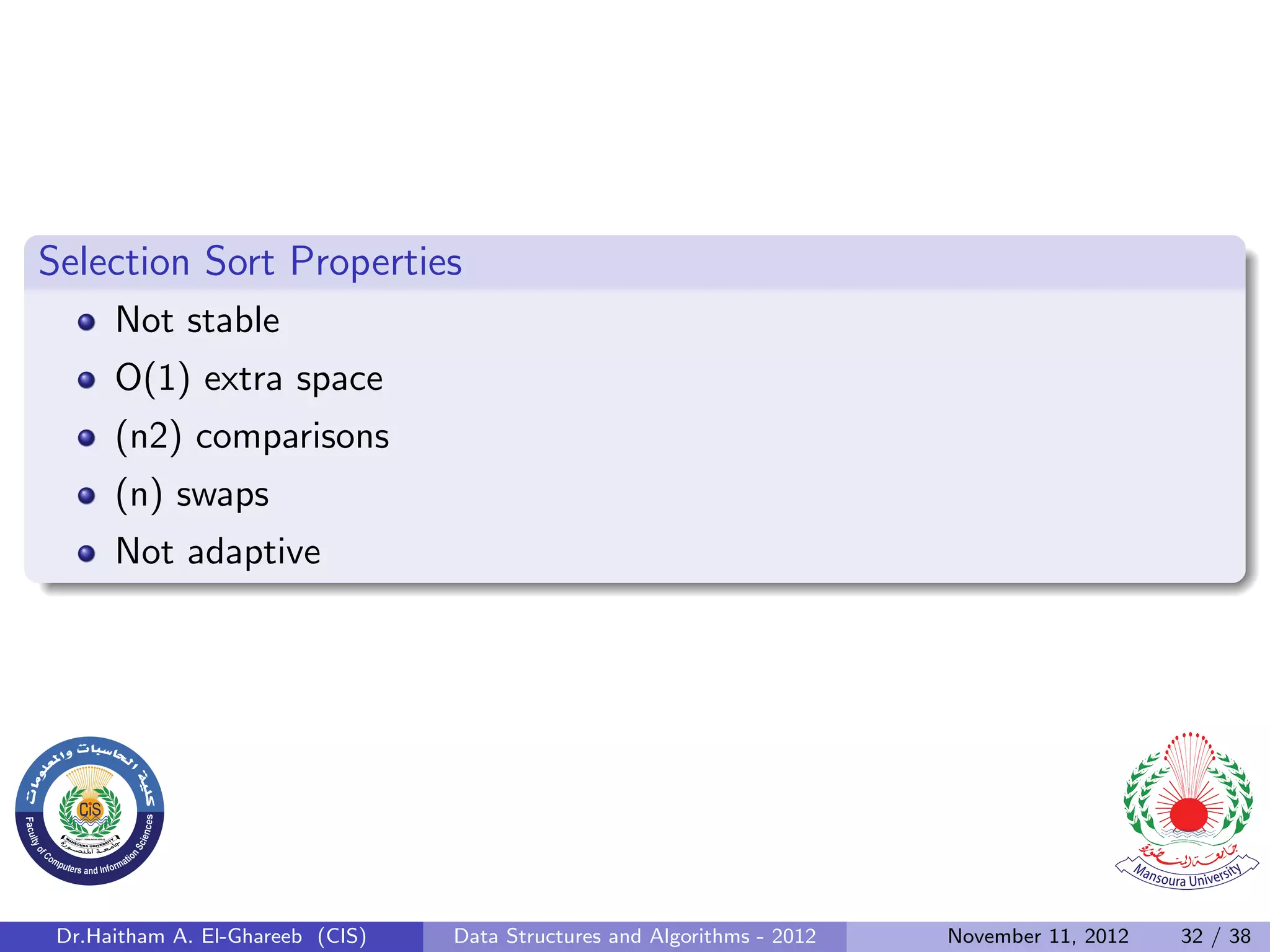
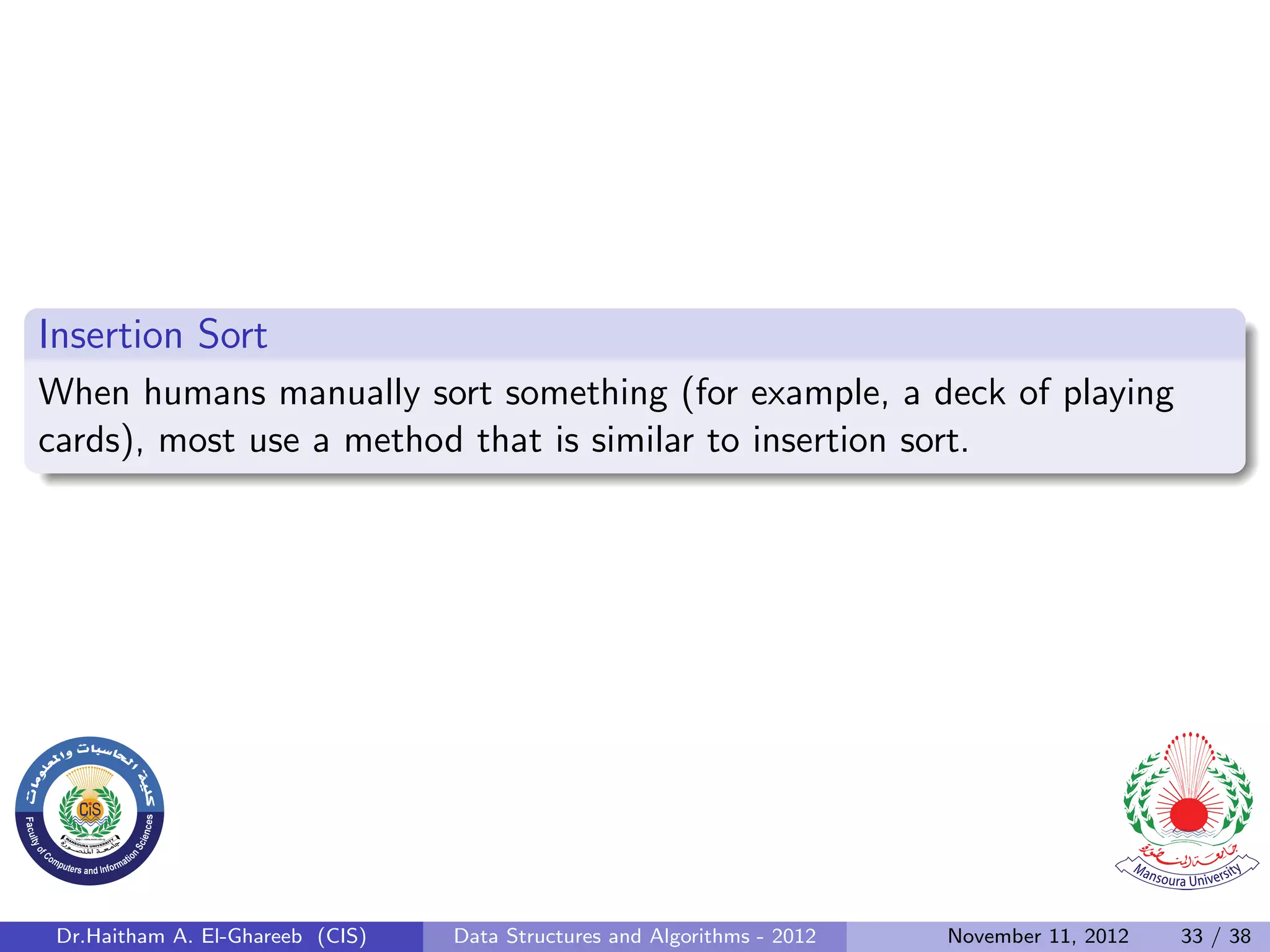
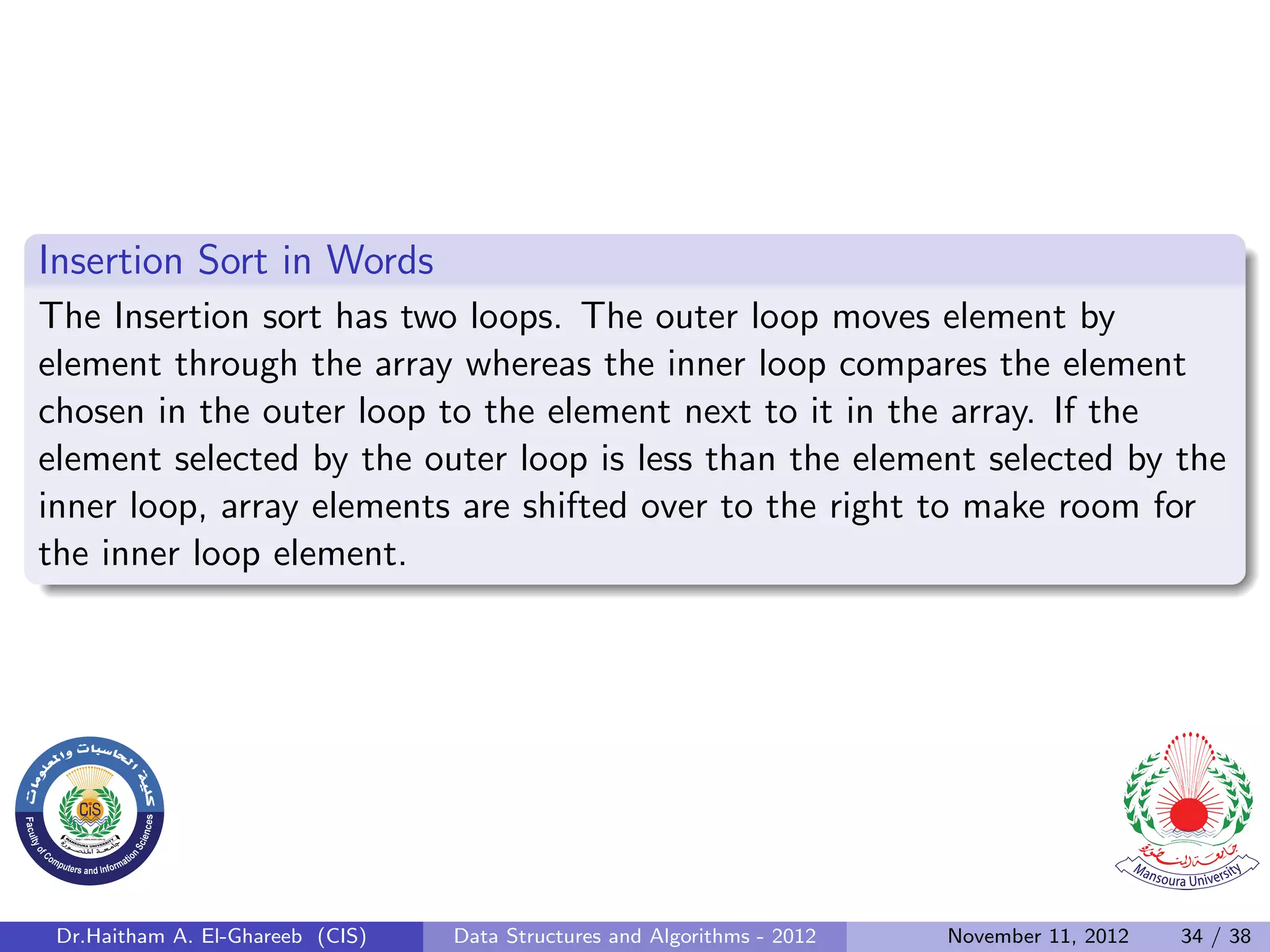

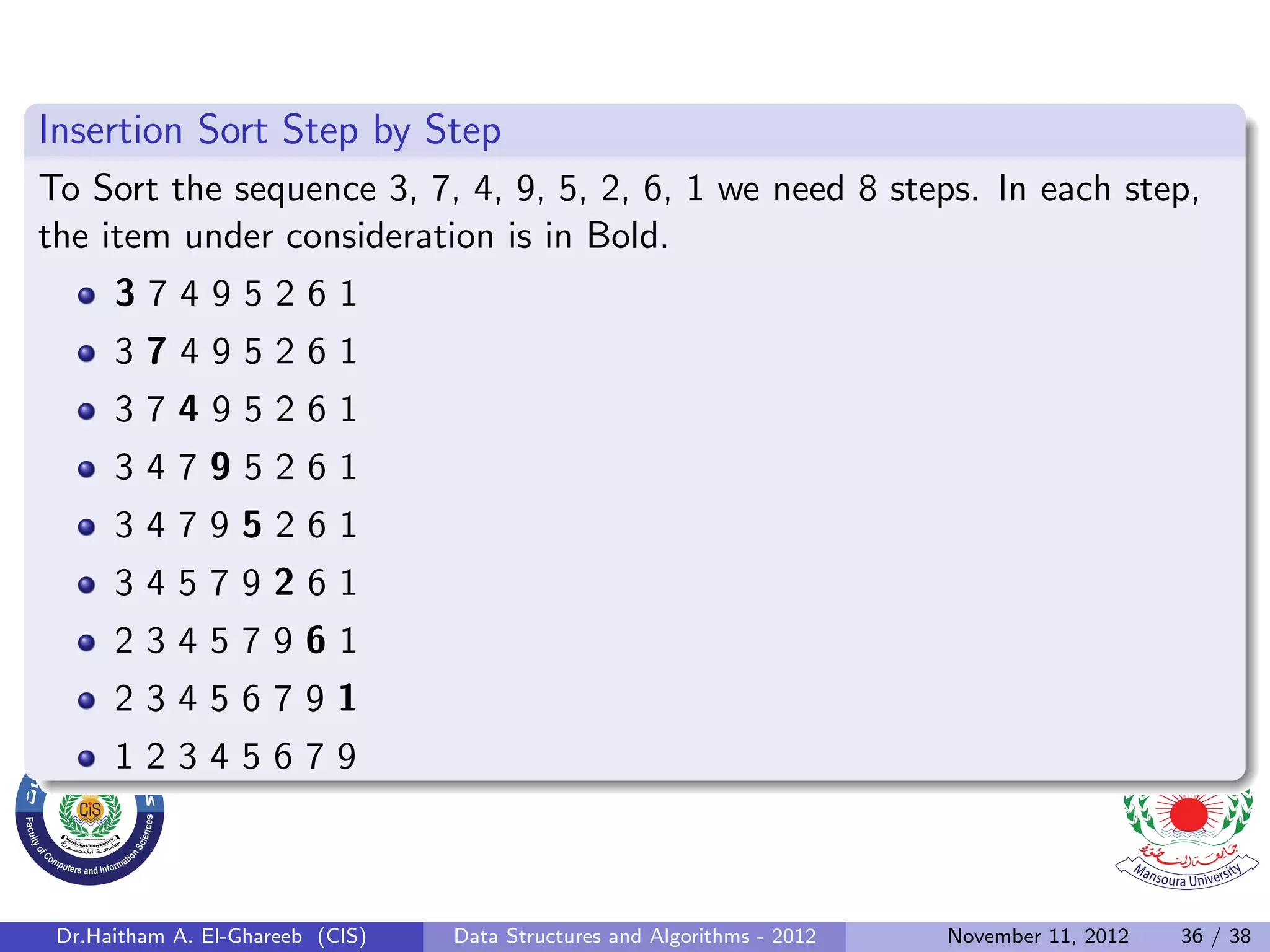
![Insertion Sort Implementation in C#
public void InsertionSort ( ) {
int inner , temp ;
for ( int outer = 1 ; outer <= upper ; outer++) {
temp = arr [ outer ] ;
inner = outer ;
w h i l e ( inner > 0 && arr [ inner −1] >= temp ) {
arr [ inner ] = arr [ inner − 1 ] ;
inner −= 1 ;
}
arr [ inner ] = temp ;
} }
Dr.Haitham A. El-Ghareeb (CIS) Data Structures and Algorithms - 2012 November 11, 2012 37 / 38](https://image.slidesharecdn.com/lect06-121110234105-phpapp01/75/Lecture-07-Data-Structures-Basic-Sorting-37-2048.jpg)
